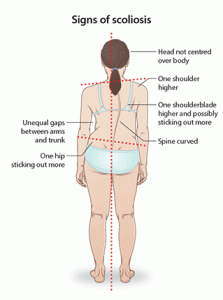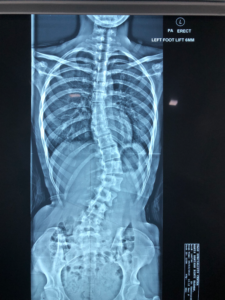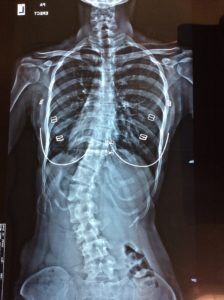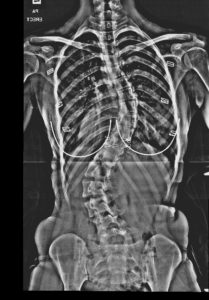Adolescent Idiopathic Scoliosis


Scoliosis can be divided into primary and secondary, of which primary (unexplained cause) accounts for 80%. Recent studies have found that primary scoliosis is mostly genetic inheritance, and a few are environmental factors. Most patients do not experience any pain, and only a few severe patients have difficulty in breathing because their lungs are squeezed by the curved spine. Usually, postural assessment and Adam's test can be used to check whether there is scoliosis, and X-ray can determine its severity. The spine will curve to the left or right, accompanied by rotation and tilting front and back with "3D" abnormalities, which are prone to continue to deteriorate during adolescence (bone growth period), so it is common in adolescents who are 10 years old to fully-grown adolescent.
Research literature shows that scoliosis is a problem with the 'neuromusculoskeletal' system, so it must be targeted at its 'neuromusculoskeletal' to effectively control its continued deterioration.



Generally, the severity of scoliosis is affected by two main factors: the degree of the angle and the age of bone development. There are different treatment options according to its different severity. The following is a brief description:
- Mild: Patients with a degree of less than 25 degrees (without family history) are exercised and monitored. Exercise is a therapeutic exercise to strengthen the required muscle groups and relax the muscle groups that are too tight for different types of scoliosis; monitoring is to take an X-ray once every 3-6 months to see the changes in the angle.
- Moderate: Patients with an angle between 25 degrees and 50 degrees need to wear a brace so that the angle does not deteriorate too quickly. Generally, doctors recommend wearing a brace for children who have not reached the angle that requires surgery (above 40 degrees) or are growing up. Research literature shows that although the scoliotic spine cannot be straightened back, the operation can be avoided or the operation can be delayed as long as one time (for growing children, it is necessary to adjust the screw every six months until the development is completed).
- Severe: Patients with an angle greater than 50 degrees and have not yet completed their growth development (there is a greater chance that they will continue to deteriorate), surgery is needed to avoid the scoliosis of the spine from squeezing the organs and causing life to be in danger.
Due to differences in the angle, position, skeletal development and individual neuromusculoskeletal system, individualized/tailored treatment strategies are required, including: the style of the schoolbag, the posture of sitting, which exercise method can avoid or delay the operation, and Studies have shown that scoliosis is no longer just a problem with the "bone and muscle" system, but a problem with the "neuromusculoskeletal" system, so the "nervous/nerves" aspect must also be treated.
For more treatments of adolescent scoliosis, please see our services:
SpineCor Scoliosis Corrective Brace
SpineCor Bracing is a 3 dimensional dynamic brace used for the treatment of idiopathic scoliosis in both adolescents and...
Read More